Moin Nabi
From Dense to Dynamic: Token-Difficulty Driven MoEfication of Pre-Trained LLMs
Feb 17, 2025Abstract:Training large language models (LLMs) for different inference constraints is computationally expensive, limiting control over efficiency-accuracy trade-offs. Moreover, once trained, these models typically process tokens uniformly, regardless of their complexity, leading to static and inflexible behavior. In this paper, we introduce a post-training optimization framework, DynaMoE, that adapts a pre-trained dense LLM to a token-difficulty-driven Mixture-of-Experts model with minimal fine-tuning cost. This adaptation makes the model dynamic, with sensitivity control to customize the balance between efficiency and accuracy. DynaMoE features a token-difficulty-aware router that predicts the difficulty of tokens and directs them to the appropriate sub-networks or experts, enabling larger experts to handle more complex tokens and smaller experts to process simpler ones. Our experiments demonstrate that DynaMoE can generate a range of adaptive model variants of the existing trained LLM with a single fine-tuning step, utilizing only $10B$ tokens, a minimal cost compared to the base model's training. Each variant offers distinct trade-offs between accuracy and performance. Compared to the baseline post-training optimization framework, Flextron, our method achieves similar aggregated accuracy across downstream tasks, despite using only $\frac{1}{9}\text{th}$ of their fine-tuning cost.
Multimodal Autoregressive Pre-training of Large Vision Encoders
Nov 21, 2024



Abstract:We introduce a novel method for pre-training of large-scale vision encoders. Building on recent advancements in autoregressive pre-training of vision models, we extend this framework to a multimodal setting, i.e., images and text. In this paper, we present AIMV2, a family of generalist vision encoders characterized by a straightforward pre-training process, scalability, and remarkable performance across a range of downstream tasks. This is achieved by pairing the vision encoder with a multimodal decoder that autoregressively generates raw image patches and text tokens. Our encoders excel not only in multimodal evaluations but also in vision benchmarks such as localization, grounding, and classification. Notably, our AIMV2-3B encoder achieves 89.5% accuracy on ImageNet-1k with a frozen trunk. Furthermore, AIMV2 consistently outperforms state-of-the-art contrastive models (e.g., CLIP, SigLIP) in multimodal image understanding across diverse settings.
SALSA: Soup-based Alignment Learning for Stronger Adaptation in RLHF
Nov 04, 2024



Abstract:In Large Language Model (LLM) development, Reinforcement Learning from Human Feedback (RLHF) is crucial for aligning models with human values and preferences. RLHF traditionally relies on the Kullback-Leibler (KL) divergence between the current policy and a frozen initial policy as a reference, which is added as a penalty in policy optimization algorithms like Proximal Policy Optimization (PPO). While this constraint prevents models from deviating too far from the initial checkpoint, it limits exploration of the reward landscape, reducing the model's ability to discover higher-quality solutions. As a result, policy optimization is often trapped in a narrow region of the parameter space, leading to suboptimal alignment and performance. This paper presents SALSA (Soup-based Alignment Learning for Stronger Adaptation), a novel approach designed to overcome these limitations by creating a more flexible and better located reference model through weight-space averaging of two independent supervised fine-tuned (SFT) models. This model soup allows for larger deviation in KL divergence and exploring a promising region of the solution space without sacrificing stability. By leveraging this more robust reference model, SALSA fosters better exploration, achieving higher rewards and improving model robustness, out-of-distribution generalization, and performance. We validate the effectiveness of SALSA through extensive experiments on popular open models (Llama2-7B, Mistral-7B, and Gemma-2B) across various benchmarks (MT-Bench, Arena-Hard, UltraFeedback), where it consistently surpasses PPO by fostering deeper exploration and achieving superior alignment in LLMs.
Computational Bottlenecks of Training Small-scale Large Language Models
Oct 25, 2024



Abstract:While large language models (LLMs) dominate the AI landscape, Small-scale large Language Models (SLMs) are gaining attention due to cost and efficiency demands from consumers. However, there is limited research on the training behavior and computational requirements of SLMs. In this study, we explore the computational bottlenecks of training SLMs (up to 2B parameters) by examining the effects of various hyperparameters and configurations, including GPU type, batch size, model size, communication protocol, attention type, and the number of GPUs. We assess these factors on popular cloud services using metrics such as loss per dollar and tokens per second. Our findings aim to support the broader adoption and optimization of language model training for low-resource AI research institutes.
Visual Scratchpads: Enabling Global Reasoning in Vision
Oct 10, 2024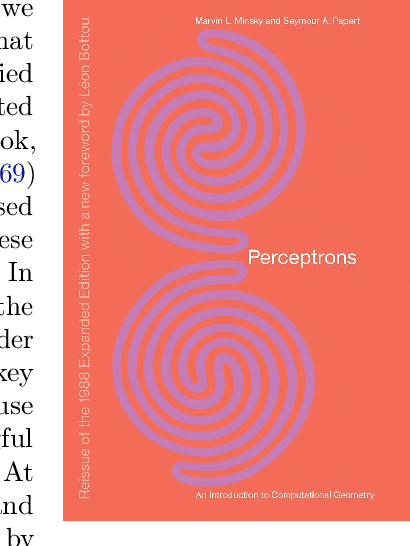
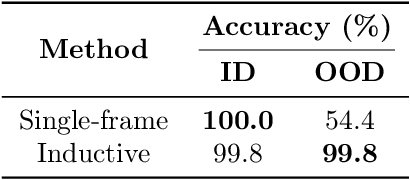
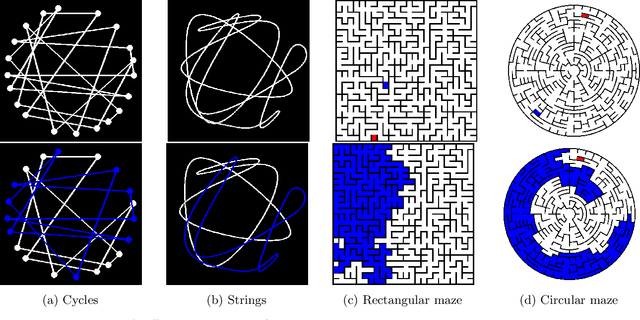
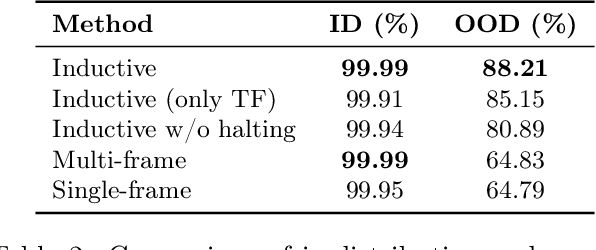
Abstract:Modern vision models have achieved remarkable success in benchmarks where local features provide critical information about the target. There is now a growing interest in solving tasks that require more global reasoning, where local features offer no significant information. These tasks are reminiscent of the connectivity tasks discussed by Minsky and Papert in 1969, which exposed the limitations of the perceptron model and contributed to the first AI winter. In this paper, we revisit such tasks by introducing four global visual benchmarks involving path findings and mazes. We show that: (1) although today's large vision models largely surpass the expressivity limitations of the early models, they still struggle with the learning efficiency; we put forward the "globality degree" notion to understand this limitation; (2) we then demonstrate that the picture changes and global reasoning becomes feasible with the introduction of "visual scratchpads"; similarly to the text scratchpads and chain-of-thoughts used in language models, visual scratchpads help break down global tasks into simpler ones; (3) we finally show that some scratchpads are better than others, in particular, "inductive scratchpads" that take steps relying on less information afford better out-of-distribution generalization and succeed for smaller model sizes.
KV Prediction for Improved Time to First Token
Oct 10, 2024



Abstract:Inference with transformer-based language models begins with a prompt processing step. In this step, the model generates the first output token and stores the KV cache needed for future generation steps. This prompt processing step can be computationally expensive, taking 10s of seconds or more for billion-parameter models on edge devices when prompt lengths or batch sizes rise. This degrades user experience by introducing significant latency into the model's outputs. To reduce the time spent producing the first output (known as the ``time to first token'', or TTFT) of a pretrained model, we introduce a novel method called KV Prediction. In our method, a small auxiliary model is used to process the prompt and produce an approximation of the KV cache used by a base model. This approximated KV cache is then used with the base model for autoregressive generation without the need to query the auxiliary model again. We demonstrate that our method produces a pareto-optimal efficiency-accuracy trade-off when compared to baselines. On TriviaQA, we demonstrate relative accuracy improvements in the range of $15\%-50\%$ across a range of TTFT FLOPs budgets. We also demonstrate accuracy improvements of up to $30\%$ on HumanEval python code completion at fixed TTFT FLOPs budgets. Additionally, we benchmark models on an Apple M2 Pro CPU and demonstrate that our improvement in FLOPs translates to a TTFT speedup on hardware. We release our code at https://github.com/apple/corenet/tree/main/projects/kv-prediction .
Contrastive Perplexity for Controlled Generation: An Application in Detoxifying Large Language Models
Jan 24, 2024Abstract:The generation of undesirable and factually incorrect content of large language models poses a significant challenge and remains largely an unsolved issue. This paper studies the integration of a contrastive learning objective for fine-tuning LLMs for implicit knowledge editing and controlled text generation. Optimizing the training objective entails aligning text perplexities in a contrastive fashion. To facilitate training the model in a self-supervised fashion, we leverage an off-the-shelf LLM for training data generation. We showcase applicability in the domain of detoxification. Herein, the proposed approach leads to a significant decrease in the generation of toxic content while preserving general utility for downstream tasks such as commonsense reasoning and reading comprehension. The proposed approach is conceptually simple but empirically powerful.
Semi-supervised learning made simple with self-supervised clustering
Jun 13, 2023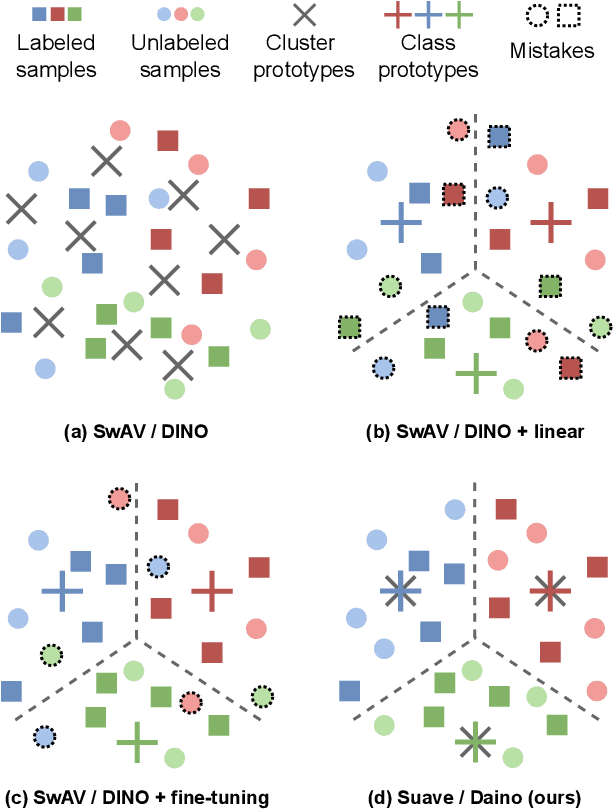
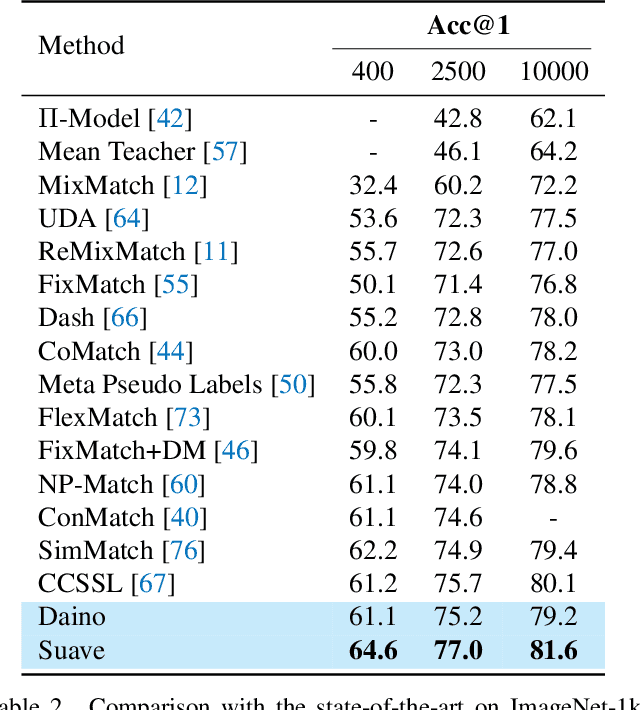
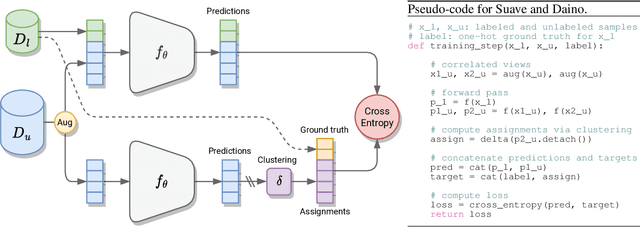
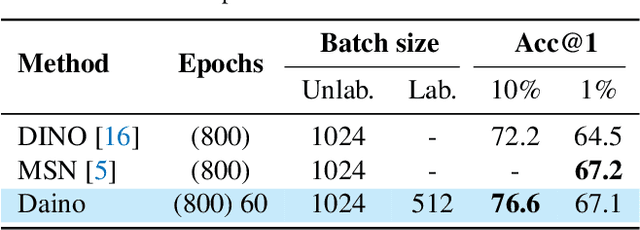
Abstract:Self-supervised learning models have been shown to learn rich visual representations without requiring human annotations. However, in many real-world scenarios, labels are partially available, motivating a recent line of work on semi-supervised methods inspired by self-supervised principles. In this paper, we propose a conceptually simple yet empirically powerful approach to turn clustering-based self-supervised methods such as SwAV or DINO into semi-supervised learners. More precisely, we introduce a multi-task framework merging a supervised objective using ground-truth labels and a self-supervised objective relying on clustering assignments with a single cross-entropy loss. This approach may be interpreted as imposing the cluster centroids to be class prototypes. Despite its simplicity, we provide empirical evidence that our approach is highly effective and achieves state-of-the-art performance on CIFAR100 and ImageNet.
* CVPR 2023 - Code available at https://github.com/pietroastolfi/suave-daino
A soft nearest-neighbor framework for continual semi-supervised learning
Dec 09, 2022



Abstract:Despite significant advances, the performance of state-of-the-art continual learning approaches hinges on the unrealistic scenario of fully labeled data. In this paper, we tackle this challenge and propose an approach for continual semi-supervised learning -- a setting where not all the data samples are labeled. An underlying issue in this scenario is the model forgetting representations of unlabeled data and overfitting the labeled ones. We leverage the power of nearest-neighbor classifiers to non-linearly partition the feature space and learn a strong representation for the current task, as well as distill relevant information from previous tasks. We perform a thorough experimental evaluation and show that our method outperforms all the existing approaches by large margins, setting a strong state of the art on the continual semi-supervised learning paradigm. For example, on CIFAR100 we surpass several others even when using at least 30 times less supervision (0.8% vs. 25% of annotations).
miCSE: Mutual Information Contrastive Learning for Low-shot Sentence Embeddings
Nov 09, 2022Abstract:This paper presents miCSE, a mutual information-based Contrastive learning framework that significantly advances the state-of-the-art in few-shot sentence embedding. The proposed approach imposes alignment between the attention pattern of different views during contrastive learning. Learning sentence embeddings with miCSE entails enforcing the syntactic consistency across augmented views for every single sentence, making contrastive self-supervised learning more sample efficient. As a result, the proposed approach shows strong performance in the few-shot learning domain. While it achieves superior results compared to state-of-the-art methods on multiple benchmarks in few-shot learning, it is comparable in the full-shot scenario. The proposed approach is conceptually simple, easy to implement and optimize, yet empirically powerful. This study opens up avenues for efficient self-supervised learning methods that are more robust than current contrastive methods for sentence embedding.
 Add to Chrome
Add to Chrome Add to Firefox
Add to Firefox Add to Edge
Add to Edge